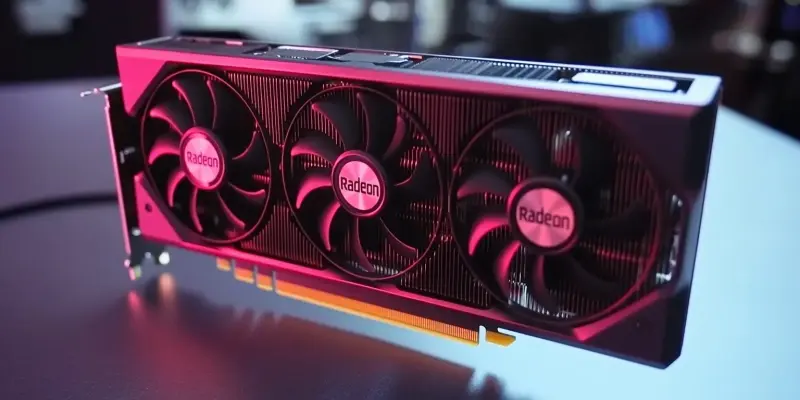AMD has officially announced the highly anticipated release of its next-generation RDNA 4-based Radeon RX 9000 GPUs, specifically the RX 9070 XT and RX 9070, which will hit the market in March 2025. This news, though not disclosed during the CES presentations due to time constraints, comes with a promise of more details at an imminent dedicated event scheduled by AMD. During the preview, AMD showcased the new architectural advancements that define the RDNA 4 architecture, along with innovative branding concepts and custom models designed to captivate the interest of tech enthusiasts and industry experts alike.
RDNA 4 Architecture and Performance Enhancements
David McAfee from AMD has confirmed that the RDNA 4-based Radeon RX 9000 cards are scheduled for a March release, reassuring consumers that both the hardware and software components are performing exceptionally well. This development aligns with AMD’s previously stated targets for a Q1 2025 launch, indicating that the company is on track to meet its projected timelines. Initial rumors had hinted at a late January release for the RX 9070 XT and RX 9070, but these speculations were ultimately unconfirmed by AMD. The latest confirmations have now set the stage for a March release, dispelling any uncertainties surrounding the launch schedule.
In a significant shift, retailers and AIBs (Add-In-Board partners) that had previously listed availability and pre-order dates for late January have since updated their timelines following AMD’s announcement. This adjustment hints at possible changes in AMD’s product positioning, supply chain logistics, or pricing strategies, potentially in response to competitive pressures from Nvidia’s RTX 50 series. The RX 9070 XT, for instance, is rumored to deliver performance levels comparable to Nvidia’s RTX 4070 Ti or RTX 4080, possibly positioning it against the RTX 5070 and 5070 Ti in the market.
Strategic Bundling and FSR 4 Technology
Adding to the excitement, there is speculation that AMD might bundle their high-end Ryzen 9 9000X3D CPUs with the new RDNA 4 GPUs, aimed at delivering an enhanced gaming experience. These Ryzen 9 CPUs, also expected to be available in March, could offer consumers a powerful combination of CPU and GPU performance, positioning AMD as a compelling choice for gamers and tech enthusiasts. Additionally, AMD has announced the upcoming introduction of FSR 4 (FidelityFX Super Resolution 4), which is set to compete directly with Nvidia’s DLSS 4 (Deep Learning Super Sampling).
At launch, FSR 4 will be exclusive to RDNA 4-based GPUs, but there’s potential for future support on older hardware. This move by AMD indicates an effort to remain competitive and cater to a broader range of consumers over time. AMD has also taken the opportunity to debunk several performance leaks that had circulated earlier, suggesting that the Radeon RX 9000 series will deliver superior performance than initially speculated. Their strategy includes enabling machine learning-based frame generation not only on new GPUs but possibly extending this capability to older models, mirroring Nvidia’s approach.
Competitive Landscape and Market Impact
The launch of these GPUs represents a significant milestone for AMD, promising to deliver cutting-edge graphics capabilities and elevate user experience to new heights. During an exclusive preview, AMD revealed the advancements that characterize the RDNA 4 architecture, including enhanced performance and efficiency. Additionally, the company introduced innovative branding concepts and custom models designed to captivate both tech enthusiasts and industry experts. By unveiling the new RDNA 4 architecture, AMD continues to push the boundaries of what is possible in the realm of graphics technology, reaffirming its commitment to innovation and customer satisfaction.


